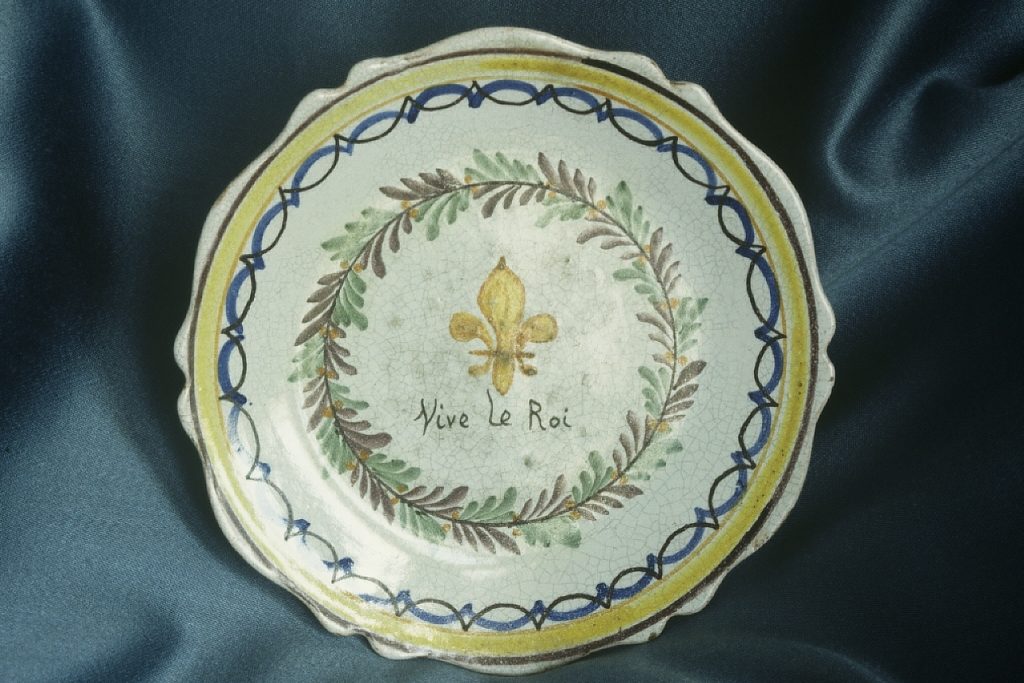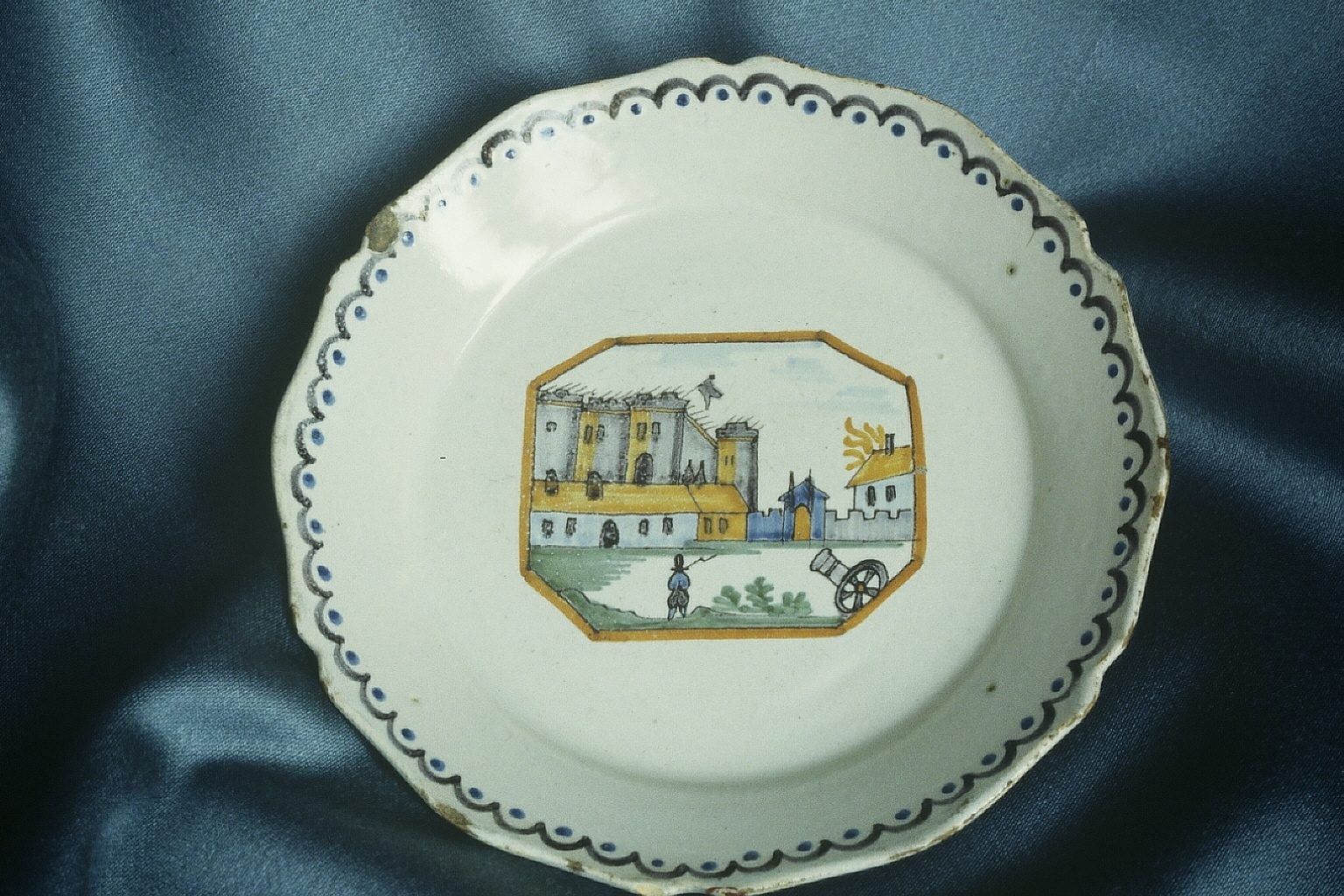The Castle
T h e P l a t e C o l l e c t i o n
Unique in France, the collection of earthenware plates adorning the main staircase brings together nearly 1000 pieces from the 17th and 18th centuries from the greatest European manufacturers: Delft, Moustiers, the Compagnie des Indes, and Italy
Jérôme de Maupas' great passion was earthenware: he collected nearly 1000 plates from the 17th and 18th centuries. Due to the astonishing proportion of the collection, his grandson Théophile de Maupas put it into shape, in the 19th century, in the shaft of the main staircase.
Théophile de Maupas carried out major “modernization” work on the residence, from 1860 under the direction of the architect Tarlier. During this period, the north wing was created and the south wing modernized... It was then that this unique collection in France exhibited all its originality: it is composed almost exclusively of earthenware. All these pieces are obviously unique and come from the largest European manufacturers: Delft, Moustiers, the Compagnie des Indes, and Italy, to name only the most important.
The collection offers the possibility of appreciating isolated examples or series: the “yellows” from Moustiers Sainte Marie, the “blues” from Delft, the “chinoiseries” from Lunéville, Saint-Clément or les Islettes, and the “naïves” multicolored from La Rochelle.
Although the majority of French manufactures ceased production after the Revolution, the "revolutionary" plates of Nevers, whose motifs are as much republican as royalist, hold a special place in the shaft of the main staircase.
In 1872, the wooden banister of the monumental stone staircase was installed. This model remained in place in anticipation of a wrought iron work which was never executed.
The monumental stone staircase, from the 18th century, and its wooden banister, from the 19th century, are listed in the supplementary inventory of historic monuments.



The Castle
T h e P l a t e C o l l e c t i o n
Unique in France, the collection of earthenware plates adorning the main staircase brings together nearly 1000 pieces from the 17th and 18th centuries from the greatest European manufacturers: Delft, Moustiers, the Compagnie des Indes, and Italy
Jérôme de Maupas' great passion was earthenware: he collected nearly 1000 plates from the 17th and 18th centuries. Due to the astonishing proportion of the collection, his grandson Théophile de Maupas put it into shape, in the 19th century, in the shaft of the main staircase.
Théophile de Maupas carried out major “modernization” work on the residence, from 1860 under the direction of the architect Tarlier. During this period, the north wing was created and the south wing modernized... It was then that this unique collection in France exhibited all its originality: it is composed almost exclusively of earthenware. All these pieces are obviously unique and come from the largest European manufacturers: Delft, Moustiers, the Compagnie des Indes, and Italy, to name only the most important.
The collection offers the possibility of appreciating isolated examples or series: the “yellows” from Moustiers Sainte Marie, the “blues” from Delft, the “chinoiseries” from Lunéville, Saint-Clément or les Islettes, and the “naïves” multicolored from La Rochelle.
Although the majority of French manufactures ceased production after the Revolution, the "revolutionary" plates of Nevers, whose motifs are as much republican as royalist, hold a special place in the shaft of the main staircase.
In 1872, the wooden banister of the monumental stone staircase was installed. This model remained in place in anticipation of a wrought iron work which was never executed.
The monumental stone staircase, from the 18th century, and its wooden banister, from the 19th century, are listed in the supplementary inventory of historic monuments.
















